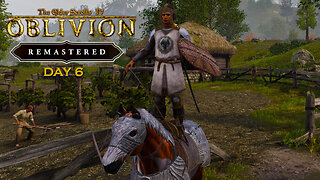Premium Only Content

"Guardians of the Skies: The World of Geese"
Geese are fascinating waterfowl known for their loyalty, intelligence, and remarkable migratory patterns. Part of the Anatidae family, which also includes swans and ducks, geese are often recognized for their long necks, webbed feet, and distinctive honking calls. Here’s an in-depth look at these impressive birds:
1. Physical Characteristics
Size and Appearance: Geese vary in size depending on the species, with some reaching up to 43 inches in length and weighing over 20 pounds. They generally have long, graceful necks, strong webbed feet for swimming, and sturdy bills suited for grazing on grasses.
Coloration: Many geese species, like the Canada goose, have black necks with white facial markings, while others, like the Snow goose, display pure white feathers. This coloration often provides camouflage in their natural habitats.
2. Diet and Foraging Behavior
Primary Diet: Geese are mainly herbivores, feeding on grasses, roots, seeds, and grains. They often graze on land and also feed in shallow waters, making use of their flat, serrated bills to pluck vegetation.
Seasonal Feeding: During migration, geese increase their food intake to build up energy reserves, enabling them to sustain their long flights.
3. Migration Patterns
Incredible Distances: Many geese species, like the Barnacle and Canada geese, migrate annually, traveling thousands of miles from their breeding grounds to warmer areas for wintering.
V-Formation: Geese are known for their iconic V-shaped flight formation, which helps them conserve energy. This arrangement allows each bird to benefit from the uplift created by the one in front, reducing fatigue.
Navigation Skills: Geese have a remarkable sense of direction, often using the Earth’s magnetic fields, landmarks, and even the position of the sun to guide their journeys.
4. Social Behavior and Communication
Strong Social Bonds: Geese are highly social and loyal birds, often forming strong lifelong pair bonds. They are protective of their family groups and work collectively to defend against threats.
Vocal Communication: Their honking serves various purposes, such as signaling danger, maintaining group cohesion, and coordinating their movements during migration. Each honk has a specific pitch and purpose, allowing geese to communicate complex messages.
Leadership Rotation: During flight, geese rotate the leader position to share the effort. The lead goose experiences the most resistance, so switching helps the flock stay energized over long distances.
5. Reproduction and Lifespan
Nesting and Mating: Geese typically choose lifelong mates and have strong family bonds. After mating, females lay 3-8 eggs and incubate them while the male guards the nest. The parents are highly protective of their young, known as goslings, which can walk and swim shortly after hatching.
Lifespan: Wild geese can live up to 20-25 years, with some reaching 30 years or more in protected environments. Their survival is aided by their cautious nature and close-knit social structures.
6. Geese in Ecosystems
Role as Grazers: By grazing on vegetation, geese help maintain the balance of wetland and grassland ecosystems, preventing overgrowth and promoting plant diversity.
Seed Dispersal: As they forage, geese also help in dispersing seeds through their droppings, contributing to plant propagation in their habitats.
Prey and Predator Dynamics: Geese are an important food source for predators like foxes, eagles, and coyotes, especially during migration and breeding seasons. However, their defensive behaviors, including loud honking and aggressive postures, often deter smaller predators.
7. Human Connection
Symbolism and Cultural Significance: In many cultures, geese symbolize loyalty, protection, and cooperation. They often appear in folklore, symbolizing vigilance and family values.
Economic Impact: Geese populations benefit ecosystems, but in large numbers, they may impact agricultural fields. Some species, like Canada geese, have adapted to urban areas, leading to new management challenges.
Conservation: Due to habitat loss and hunting pressures, some geese populations have been at risk. Conservation efforts focus on protecting wetland habitats and regulating hunting to ensure their survival.
Key Species of Geese
Canada Goose (Branta canadensis): Known for its black head and neck with a white chinstrap, it’s one of the most recognized and widespread geese species.
Snow Goose (Anser caerulescens): Known for its striking white plumage, this species migrates in large flocks and is often seen in marshes and coastal areas.
Greylag Goose (Anser anser): The ancestor of many domestic geese breeds, the Greylag is native to Europe and Asia and is recognizable by its grayish-brown plumage and orange .
-
 1:24:54
1:24:54
Badlands Media
11 hours agoBaseless Conspiracies Ep. 130: Iberia Blackout, Green Energy Failures, and Grave-Robbing Government Experiments
63.7K23 -
 2:12:50
2:12:50
FreshandFit
4 hours agoModern Men VS Modern Women
24.5K26 -
 4:17:07
4:17:07
vivafrei
5 hours agoELECTIONS CANADA RESULTS LIVE STREAM WITH VIVA COMMENTARY!!!
112K117 -
 2:39:37
2:39:37
TimcastIRL
5 hours agoDemocrat LAUNCHES IMPEACHMENT Against Trump Citing Deportation, Abrego Garcia Case | Timcast IRL
142K126 -
 2:17:27
2:17:27
IcyFPS
4 hours agoA new legend rises.. Icy vs Teardrop | @playoffthegrid | Team MERC Grind |
17.3K2 -
 LIVE
LIVE
TwinGatz
6 hours ago🔴LIVE - Endless Jank | Oblivion Remastered
114 watching -
 1:33:55
1:33:55
Glenn Greenwald
11 hours agoGaza Starves, Pro-Israel Propagandists Escalate Extremist Rhetoric and Actions | System Update #444
136K284 -
 LIVE
LIVE
EnDuEnDo
5 hours ago🚨Variety Stream 🎮 Push to 500 Followers 🚀 Chill Vibes 😎
164 watching -
 11:04:48
11:04:48
GrimmHollywood
13 hours ago🔴LIVE • GRIMM HOLLYWOOD • SHADOW OF THE ERDTREE FIRST PLAYTHROUGH • PART 1
67.4K3 -
 1:40:13
1:40:13
megimu32
7 hours agoON THE SUBJECT: This Timeline is Broken: Epstein, Aliens & Summer Anthems
51.5K19